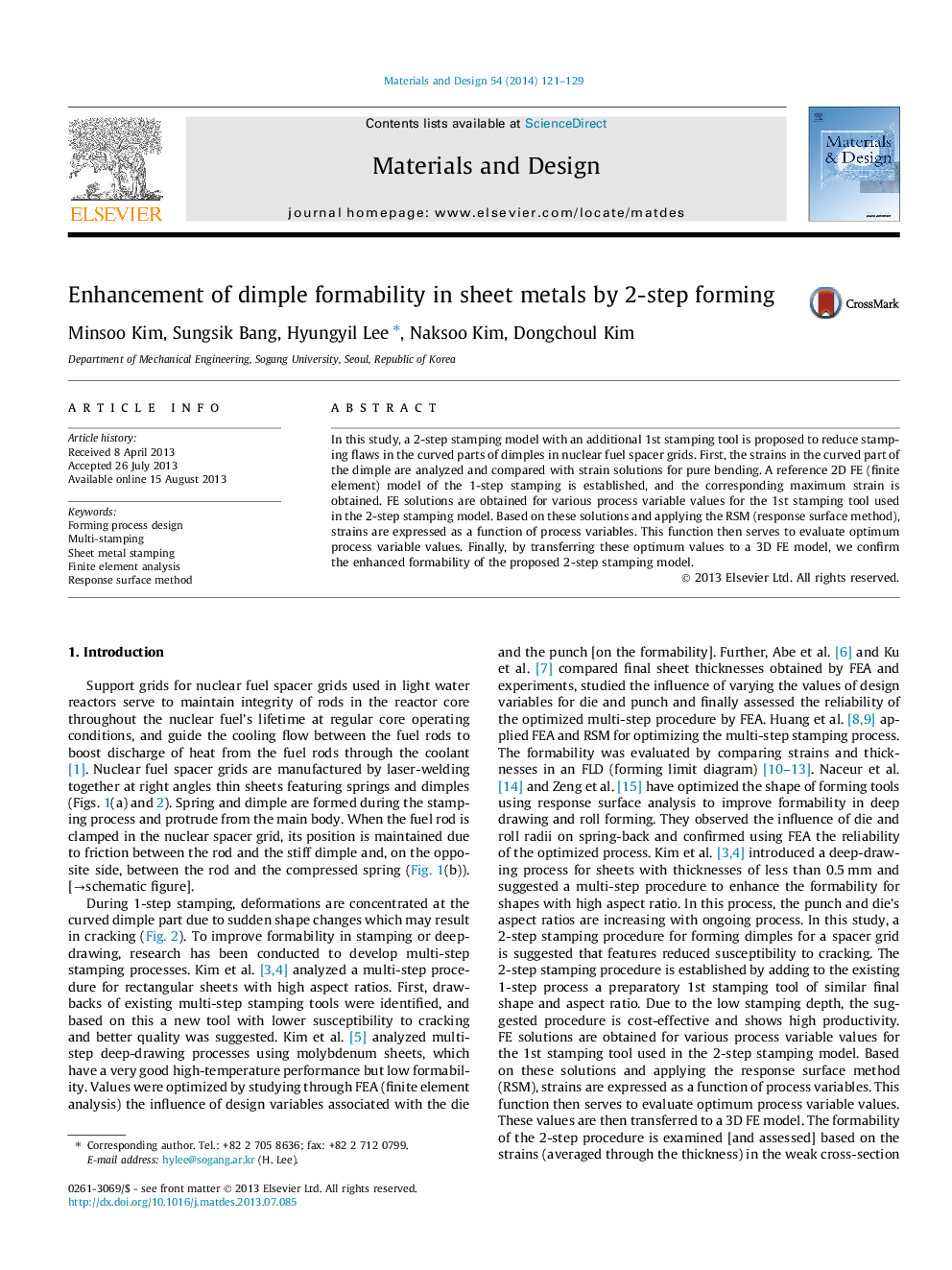| Article ID | Journal | Published Year | Pages | File Type |
|---|---|---|---|---|
| 829619 | Materials & Design (1980-2015) | 2014 | 9 Pages |
•Suggested 2-step model aims at a lower susceptibility to cracking.•Strain at weak point could be reduced by 16% compared to 1-step model.•A more uniform thickness distribution is achieved by the 2-step model.•The maximum stress in the FLSD and the GTN damage variable reduced at the weak point.•The 2-step model provides an enhanced formability compared to the 1-step model.
In this study, a 2-step stamping model with an additional 1st stamping tool is proposed to reduce stamping flaws in the curved parts of dimples in nuclear fuel spacer grids. First, the strains in the curved part of the dimple are analyzed and compared with strain solutions for pure bending. A reference 2D FE (finite element) model of the 1-step stamping is established, and the corresponding maximum strain is obtained. FE solutions are obtained for various process variable values for the 1st stamping tool used in the 2-step stamping model. Based on these solutions and applying the RSM (response surface method), strains are expressed as a function of process variables. This function then serves to evaluate optimum process variable values. Finally, by transferring these optimum values to a 3D FE model, we confirm the enhanced formability of the proposed 2-step stamping model.
